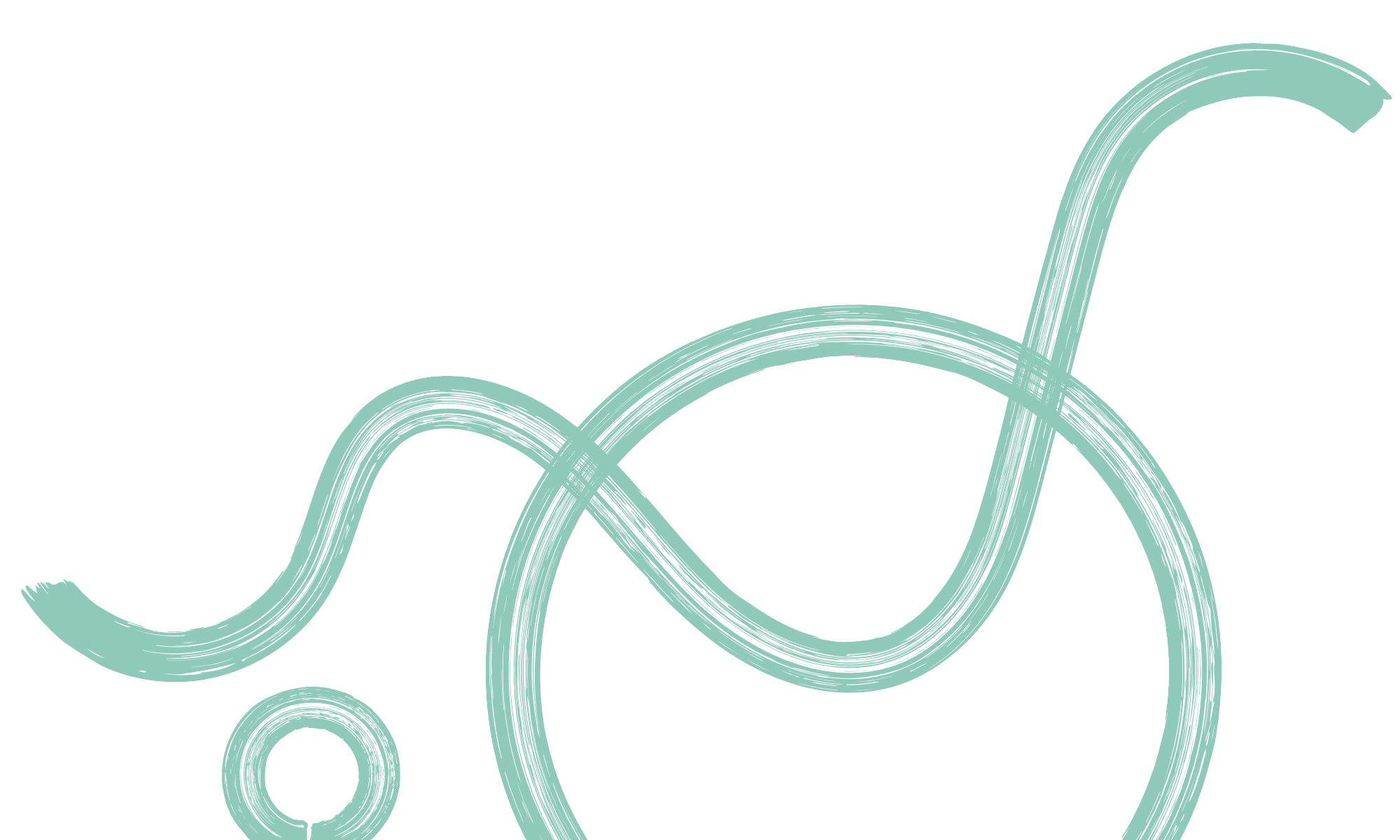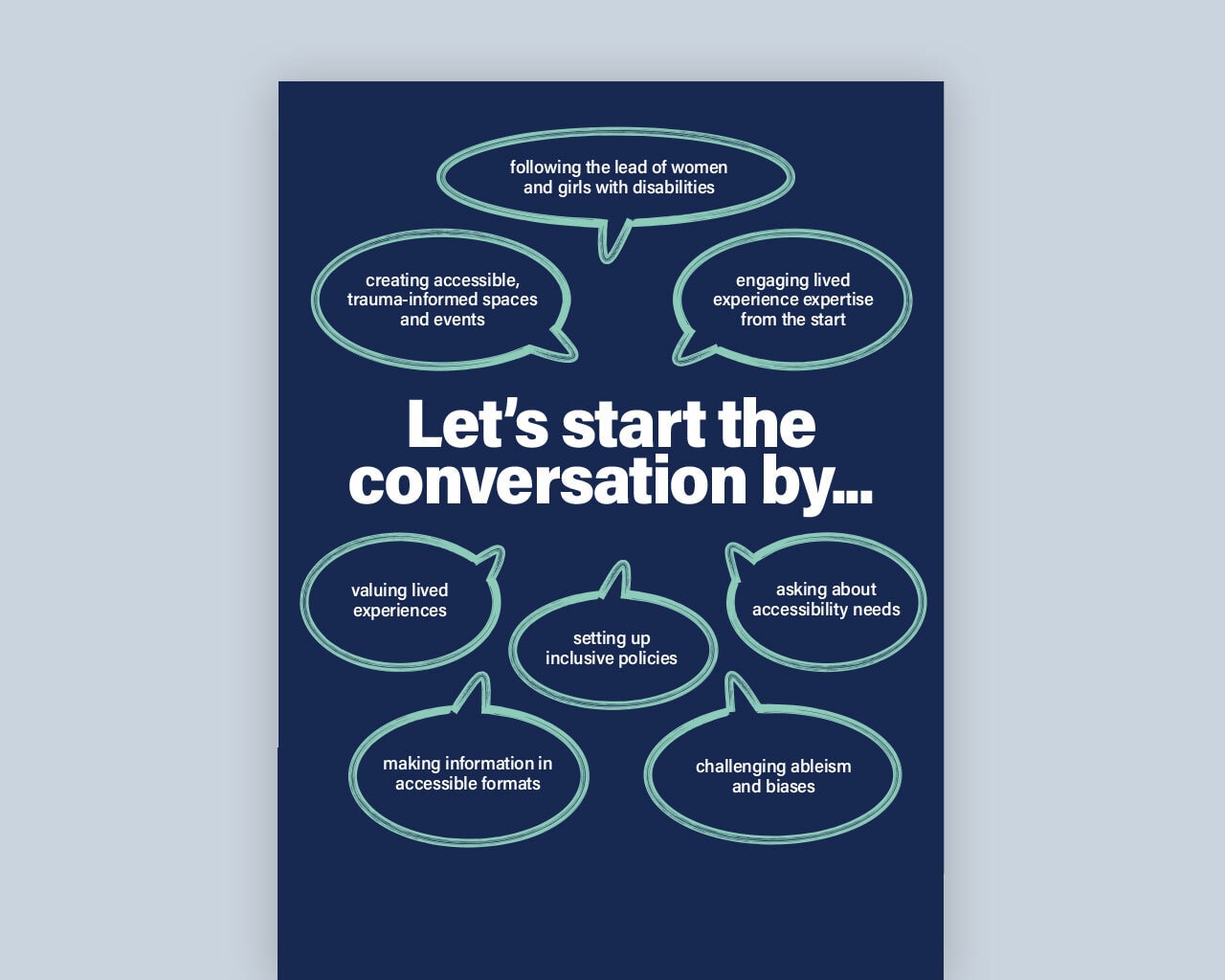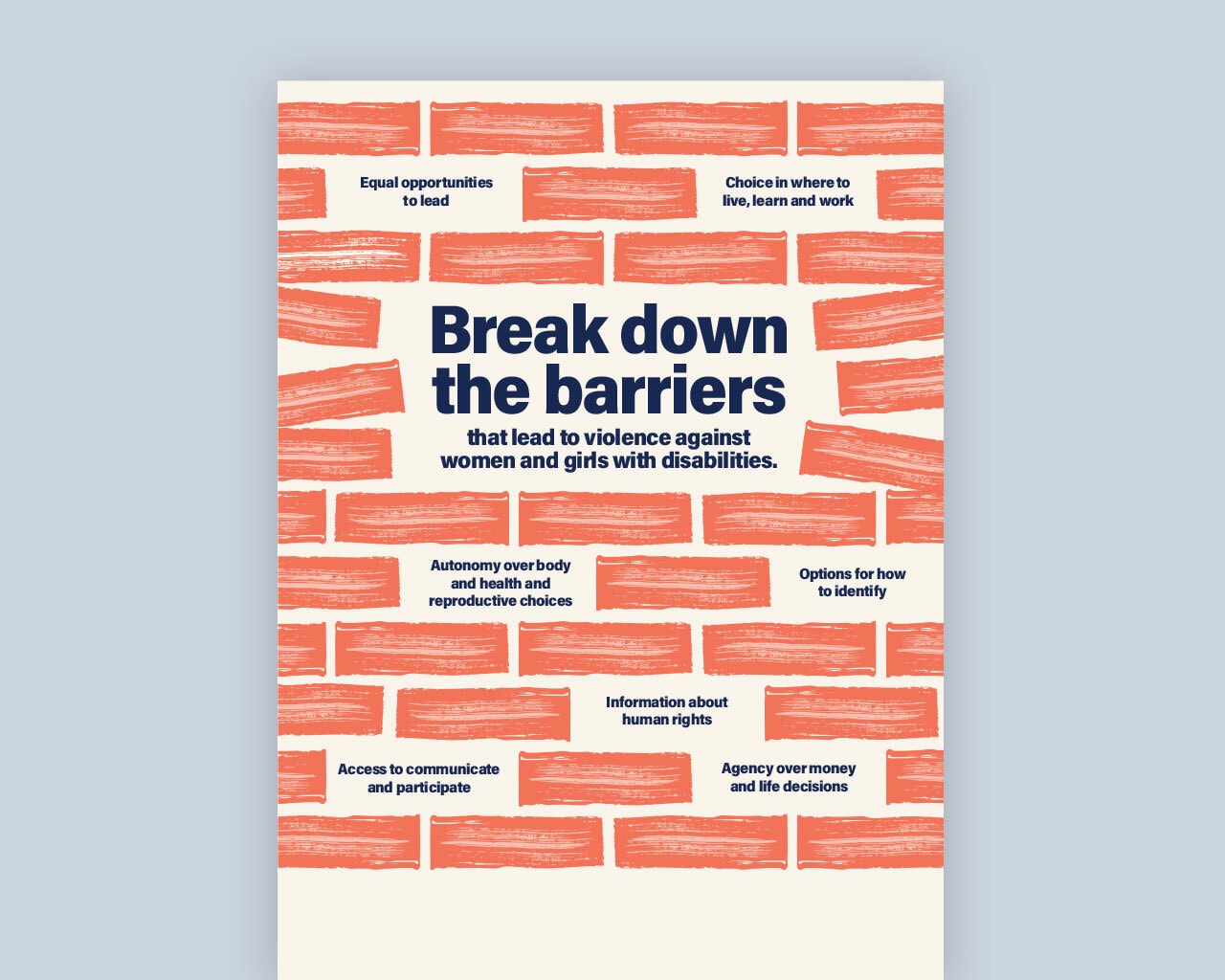Changing the landscape


Violence against women and girls with disabilities is a prevalent, serious and preventable violation of human rights.
Changing the landscape: A national resource to prevent violence against women and girls with disabilities is Our Watch and Women with Disabilities Victoria’s national, evidence-based resource to guide the prevention of violence against women and girls with disabilities.
Also on this page is a suite of accessible video, audio and static practitioner resources which have been translated from the Changing the landscape evidence base, in partnership with Women with Disabilities Victoria.

Download Word report (2 mb)
Download Changing the landscape summary – PDF (324 kb)
Download Changing the landscape summary – Word (421 kb)
Download Background paper – PDF (798 kb)
Download Background paper – Word (306 kb)
Changing the landscape complements, expands on and extends the evidence contained in Change the story. It does so by:
building and deepening the understanding of violence against women and girls with disabilities and its dynamics and impacts
offering a conceptual model that explains the underlying and intersecting drivers of this violence
providing a set of essential actions that address the underlying drivers of violence against women and girls with disabilities at all levels of society
providing supporting actions to address the reinforcing factors of violence against women and girls with disabilities
offering principles for prevention that guide the way in which the essential and supporting actions should be implemented.
This resource names ableism and gender inequality as the two consistent, intersecting drivers of violence against women and girls with disabilities.
It sets out the actions that must be taken to address these drivers and stop this violence before it starts. It points to the many stakeholders that need to take action – from individuals to communities, schools and workplaces, to disability and health services, and governments. It makes clear that we all have a role to play in preventing this violence.
This resource is relevant to anyone involved in policy development or program funding, design, planning or implementation, and those working ‘on the ground’ in numerous fields – including disability-specific and violence-specific roles, as well as other more general contexts.
Our Watch has partnered with Women with Disabilities Victoria on a project to support practitioners, disability professionals and governments, as well as broader society, to prevent violence against women and girls with disabilities.
Together, we’ve translated the evidence base from the Changing the landscape framework into a suite of accessible video, audio and static resources.
These resources centre the lived experience of women with disabilities and were developed through an inclusive co-design process. They transform the evidence base into action, while strengthening broader application of an intersectional lens in primary prevention work.
In the sections below you can find:
8 video explainers in series called 'Take note'
5 case study videos in a series called 'Get real'
6 audio episodes in a series called 'Shift the culture'
Infographic posters for the workplace.
These 8 short videos explain Changing the landscape concepts that were identified by co-designers as central to the work of prevention practitioners or anyone concerned with preventing violence against women and girls with disabilities.
In the videos, Talie and Katie translate concept definitions into clear, actionable steps for promising practice. Check out the page below to watch the 8 explainer videos with transcripts available.

8 video explainers
A series of video explainers that explore the prevention of violence against women and girls with disabilities.
The video playlist below will play videos that are open captioned and audio described. Find the Auslan interpreted playlist of the 'Take note' video explainers here.
What’s life like being a woman with disability? How can allies be supportive, and help prevent violence? What is ableism and how it does it show up in daily life for women with disabilities? How is it a form of violence? And how can allies start to ‘unlearn’ ableism?
These 5 case study videos have been designed for learning about violence against women and girls with disabilities, what it looks like and how we can stop it.
Five women – Annabel, Christine, Laura, Renay and Talitha – share their authentic, personal stories of lived experience of disability, highlighting the barriers they’ve faced. They discuss what allies and prevention practitioners can do in their daily lives, at home and at work, to help prevent violence against women.
Check out the page below to watch the 5 case study videos with transcripts available.

5 case study videos
'Get real' is a series of video case studies about primary prevention and violence against women and girls with disability.
The video playlist below will play videos that are open captioned and audio described. Find the Auslan interpreted playlist of the 'Get real' case study videos here.
These 6 audio episodes in a series called ‘Shift the culture’ explain key Changing the landscape concepts, share lived experience insights and suggest ways disability service professionals can embed promising practice in their daily work.
The content is a carefully selected mix of audio from the case study and explainer videos, with new insights from host, Katie Brebner-Griffin. Check out the page below to listen to the 6 audio episodes with transcripts available.

6 audio episodes
'Shift the culture' is a series of audio episodes that introduce concepts of primary prevention of violence against women and girls with disability.
The audio playlist below will play the audio episodes in sequence. Transcripts are available here.
These tools are designed for prevention practitioners and disability workers, as well as organisations and management teams. They will support you to reduce ableism and bias when working with or engaging the expertise of women with disabilities.
This poster features a variety of ways that you and your team can better support women and girls with disabilities. These ideas can inform how you interact with clients, how you approach new projects and how you approach your day-to-day work.

Download Word version (22 kb)
This poster illustrates the opportunities available to women and girls with disabilities once the barriers they face are broken down. It can help shape your approach to supporting women and girls with disabilities through your work.

Download Word version (22 kb)
The Framework for action to prevent violence against women and girls with disabilities: A resource for governments and policymakers draws on the evidence base in Changing the landscape and is designed to support governments and policy makers in their work to prevent violence against women and girls with disabilities.

Download Easy English Word report (50 kb)
How can we prevent violence against women and girls with disabilities?
This webinar focusses on the new Changing the landscape practitioner resources. It was produced in partnership with Women with Disabilities Victoria.